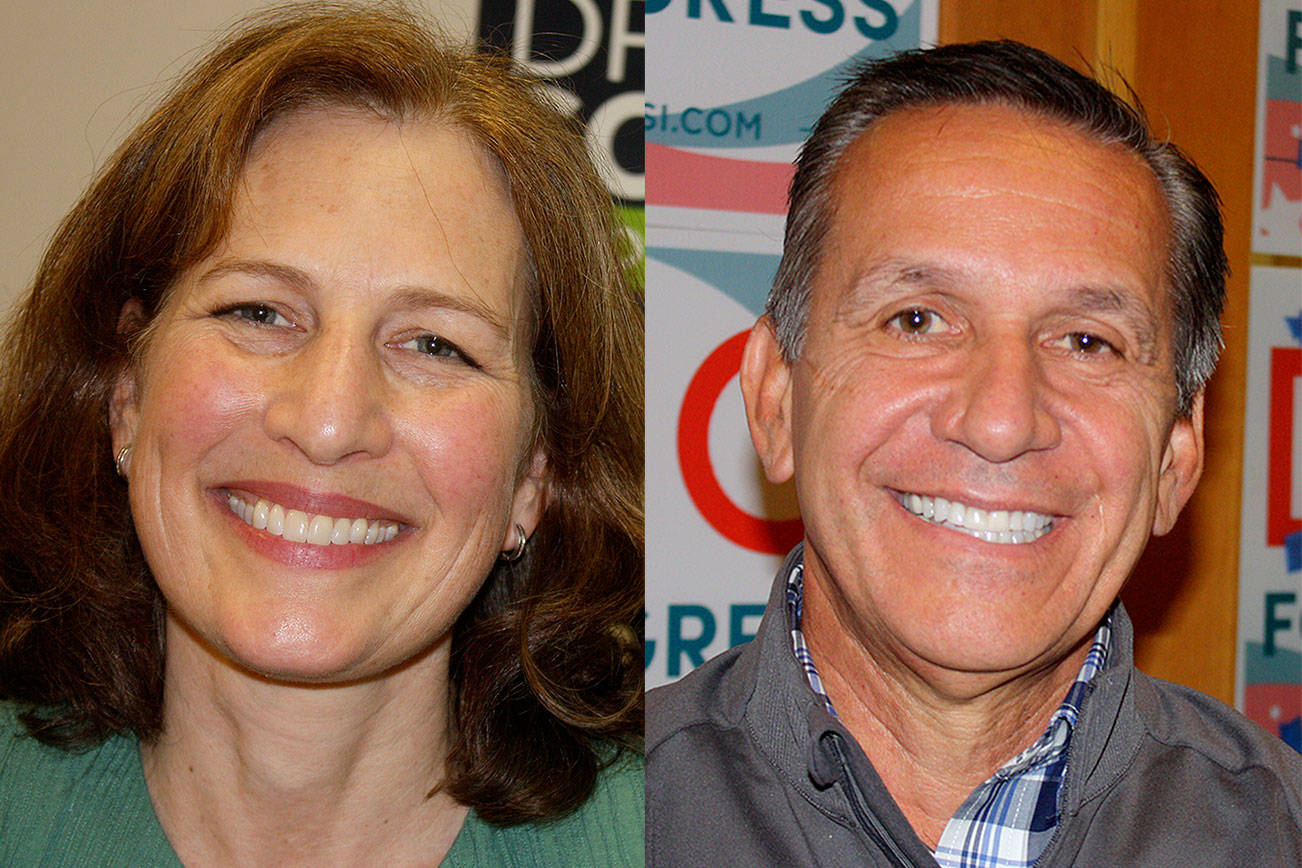The Democrats’ control of the Washington Senate and House is razor thin—25-24 and 50-48.
The upcoming primary elections in August and general elections in November will decide whether Democrats will stay in charge of both chambers, allowing them to advance their agendas beyond what they accomplished earlier this year. From 2013 to 2017, a Republican Senate and Democratic House stopped most of the agendas of both sides. When Democrat Manka Dhingra won the special election for the 45th District Senate seat in November 2017, it opened the floodgates for five years of stalled Democratic legislation, but not all of it could be tackled during the two-month legislation session earlier this year.
Much hotly contested policy is at stake with these elections. Will Gov. Jay Inslee be able gather enough votes in 2019 for a carbon tax designed to trim greenhouse emissions? He needs some cushion in both chambers because not all Democrats support this concept. Could extra Democrats finally lead to passing the often-stalled capital gains tax (another measure with strong but not unanimous Democratic support)? (Another question is whether the Democrats will tackle this capital-gains measure, since the Legislature is no longer under the gun by the Washington Supreme Court to increase the education budget.) Democrats also view the 2019 legislative session as an opportunity to continue their 2018 momentum on getting social bills passed.
But despite the current near-even split, the 2018 election playing field appears to favor Democrats in a rundown of potential swing districts.
“The Democrats will be on offense. The Republicans will be on defense,” said Ben Anderstone, a political consultant specializing in voting patterns and demographics.
There are factors in play beyond the characteristics of each legislative district, including the money being raised by both sides. Will a fledgling centrist Independent party get any candidates past the top-two primary in August? And how will voters treat two state representatives—Republican Matt Manweller and Democrat David Sawyer—who lost their leadership positions in the past year due to sexual- harassment allegations?
How much of a backlash against President Donald Trump will come into play? It’s a major nationwide question. Original predictions of a huge backlash has been softened in recent months by improving Trump poll numbers, though they are still in the lower-40 percent range.
“We may see a modified [Democratic] wave election,” Anderstone said.
Sex Scandals
Normally, Washington politics has a low tolerance for any hint of sexual misconduct. The accused are usually pressured to resign. At least two Democrats left the Legislature under such clouds this decade.
Two incumbent state representatives—Sawyer (D-Tacoma) and Manweller (R-Ellensburg)—are trying to buck that trend. And both appear to have decent chances of being re-elected
An independent investigation found Sawyer drunk- dialed several women including House employees and sent inappropriate texts to several women, including staff members. He also harassed a staffer about her sexual orientation. Meanwhile, Manweller, a political science professor, has been accused of being inappropriately flirtatious with at least two lobbyists and one staffer, as well as making several Central Washington University female students uncomfortable in a sexual way several years ago.
Both lost their leadership positions in their caucuses within the past year due to those allegations, but were not greatly pressured to resign from the House. So they didn’t.
Manweller faces no Republican challenger in the primary and will run against Democrat Sylvia Hammond in the November election. So far, he has raised $86,390 to Hammond’s $24,818. Anderstone noted that Manweller’s 13th district—which encompasses most of Kittitas, Grant, and Lincoln counties—is one of the most conservative in Washington.
Meanwhile, Sawyer faces a primary and possibly November challenge from Democrat Melanie Morgan, who has the endorsement of about 20 members of the House Democratic caucus members. However, Sawyer currently has a war chest of $89,990 to Morgan’s $15,160 in this 29th District race. Meanwhile, Anderstone noted: “This is a district where there is a low-level of political engagement and awareness.”
Washington’s New Independent Party
Chris Vance, a former chairman of the state Republican party, has founded the new Washington Independent party, a fledgling movement to create a centrist third party in state politics. This third party is a response to the extremes of both of the established political parties. It has unveiled more than a half-dozen candidates—all but one raising almost no cash so far.
The exception is Ann Diamond in the 12th District, which includes all of Chelan and Douglas counties, plus parts of Okanogan and Grant counties. The district’s longtime Republican representative Cary Condotta (R-East Wenatchee) is retiring. As an Independent, Diamond has already raised a healthy $61,573, according to the Washington Public Disclosure Commission, while none of her GOP or Democratic opponents have raised a single cent.
While a Diamond win in November—which has a very good chance of happening—would subtract from the House GOPs current 48 members, her district does lean conservative. This raises the question: Would Diamond actually be her own caucus of one, or would she caucus with the Republicans?
Senate Races to Watch
Republicans will need to hold all 24 of their seats and win at least one of three Democratic seats in the suburbs of King County or Everett County to regain control of the Senate. All three targets are steep uphill climbs for the GOP.
The 44th District (Eastern Snohomish County)
Incumbent Sen. Steve Hobbs (D-Lake Stevens) is arguably the Seante’s most moderate member. He has steadily won re-election in the 44th, including getting 54 percent of the vote in 2014, an otherwise strong GOP year. Also, Hobbs has raised $172,543 so far, compared to the $49,959 of GOP challenger Douglas Roulstone (which would be a huge amount in many other races).
The 45th District (Parts of Redmond, Kirkland, Duvall, Sammamish, and Woodinville and a huge chunk of rural upscale commuter neighborhoods)
Theoretically, incumbent Democratic Sen. Dhingra should be vulnerable because she took office less than a year ago in a special election that gave the Democrats a 25-24 majority. But the Indian-American’s district is becoming more and more multicultural. She also won with 60 percent of the vote in the 2017. And Dhingra has a war chest of $117,077, compared to Republican challenger Dale Fonk’s $19,422, according to the PDC.
The 48th District (Parts of Medina, Redmond, Kirkland, Bellevue, and several small suburbs)
This is a strange election pitting Democrat Rodney Tom against incumbent Democrat Patty Kuderer. If Tom wins, a scenario could unfold with 24 Republicans, 24 Democrats, and Tom as a one-man caucus that could be a powerful swing vote in the Senate. The two Republicans in this primary have dropped out, essentially providing Tom unobstructed access to the district’s GOP voters.
Tom has switched party loyalty three times since 2002. He started as a GOP state representative before that party’s social stances caused him to become a Democratic state senator, but then he switched again to lead a coalition of 24 Republicans and two Democrats in 2013, a flip due to his disagreements with Democrats on financial matters. He decided not to run again in 2014 for personal reasons.
This year, he is running as a moderate Democrat who won’t caucus with either Republicans or Democrats. However, he decided not to join Vance’s Independent party. In each election he won by 52 to 53 percent of the votes. But this is the first time he will run since turning on the Democrats to run the Republican coalition during his last tenure.
Meanwhile, former state representative Kuderer has been in the 48th’s Senate seat for three years, replacing Cyrus Habib, who became lieutenant governor. She tallied 70 percent of the vote in her last two elections. Gov. Jay Inslee—an opponent of Tom—carried the 48th with 68 percent in 2016.
So far, Kuderer has raised $112,634 to Tom’s $70,530—hinting that this could end up one of the most expensive Senate races this year.
Meanwhile, Democrats have decent chances at two Republican Senate seats. The left has a better chance of picking up at least one of these two GOP slots than the Republicans have of picking up one of the three Democratic seats.
The 26th District (Southeastern Kitsap Peninsula from Bremerton to Gig Harbor)
While this is a mildly red district that has steadily elected Republicans in recent years, Sen. Jan Angel (R-Port Orchard) unexpectedly dropped out at the end of the filing period in May, catching her party off guard. Consequently, the top Republican left in this race is Marty McClendon, who lost the 2016 lieutenant governor’s race to Cyrus Habib by a significant margin.
The 26th has a strong enough Democratic presence to make this race competitive, especially since Democrat Emily Randall has raised $87,099 to McClendon’s $24,372, according to the PDC.
The 42nd District (Part of Bellingham and all of rural Whatcom County)
This is a gerrymandered marriage between part of a liberal college town and a very conservative agriculture area that ultimately leans Republican. “It the most polarized district in the state of Washington,” Anderstone said. Hillary Clinton won this district by 3 percent in 2016.
Incumbent Sen. Doug Eriksen (R-Ferndale) is also a polarizing figure in the district. He’s a strong supporter of the oil industry—one of the top employers of the 42nd—but also has a strong record against environmental regulations and is a hardcore Trump supporter. He captured 59 percent of the vote in the 2014 election.
Ericksen has raised $63,450 so far. Meanwhile, Democratic challengers Timothy Ballew and Pinky Vargas have raised $76,872 and $53,104 respectively.
All this points to the 42nd competing with the 48th to become the most expensive Senate race in the state.
House Races to Watch
Democrats have legitimate chances of taking up to six or seven seats, while Republicans have outside hopes of adding a few more. But the election math—incumbency and major differences in campaign war chests—doesn’t give the GOP much chance to knock off any Democratic incumbents.
The 5th District (Essentially eastern King County)
This is a swing district with a Democratic senator and two Republican representatives. Democrat Lisa Callan is challenging Rep. Paul Graves (R-Fall City), while Democrat Bill Ramos is taking on GOPer Chad Magendanz for the seat vacated by Rep. Jay Rodne (R-Snoqualmie).
Graves has spent only one year in office, winning by 53 percent in 2016. Magendanz was a representative for the 5th for several years, easily winning elections before gunning for incumbent Democrat Sen. Mark Mullett’s seat in 2016—and losing by 516 votes.
The money is serious. Callan has raised $51,328 to Graves’ $92,907, PDC figures say, and Ramos has $79,083 to Magendanz’s $30,408.
Another statistic worth noting: Clinton won this district by 17 percentage points.
The 6th District (Spokane’s western suburbs)
The 6th is adjacent to downtown Spokane’s heavily Democratic 3rd District, the state’s only Democratic district east of the Cascades. While the 6th has steadily leaned Republican, Anderstone believes it will be in play this year.
Incumbent Rep. Jeff Holy (R-Cheney) wants to move to the Senate, and is running to replace Sen. Michael Baumgartner, R-Spokane, who is leaving.
Consequently, Democrat David Wilson will take on Republican Virginia Graham for Holy’s House seat. Wilson has raised $22,648 so far, compared to only $3,685 by Republican Virginia Graham.
Meanwhile for the second House seat, Democrat Kay Murano is challenging Republican incumbent Mike Volz. Each has raised roughly $10,000.
The 18th District (The outer belt of Vancouver)
Republican incumbent Rep. Liz Pike is retiring. To fill that seat, Democrat Kathy Gillespie is running against Republican Larry Hoff. Gillespie has raised $101,237, Hoff $64,392. This could easily become the most expensive House race.
The 25th District (Mainly Puyallup)
The 25th tends to lean right, but its two GOP incumbents decided not to run this year. Republican Kelly Chambers ($21,898 so far) is running against Democrat Julie Door ($28,084 so far). Democrat Brian Duthie ($31,376) is challenging Republican Chris Gildon ($22,265). The 25th went twice for Barack Obama, then slightly for Trump in the last presidential election.
While Democrats look competitive in the Senate races in the 26th and 42nd districts, that does not seem to translate to the House races in those same areas. The House Democratic challengers have raised only small fractions of the war chests of the GOP incumbents in those districts.








